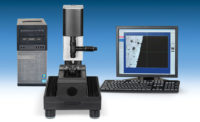The committee members include newly appointed chief quality officers for the regions of North America; Europe; China; Asia and Oceania; and the Middle East, Africa and Latin America. These officers will represent concerns of customers. Also present at the meeting were representatives from Toyota’s business operations and others.
The company’s global committee will investigate the causes of quality problems, including those that necessitate recalls, and reexamine the factors that affect quality in every phase of design work, manufacturing, marketing and service. By approaching the task of quality assurance from the standpoint of customers in each region, and by keeping in mind the need for strengthened global communication and transparency, the committee decided on various improvement measures aimed at resolving current issues.With tje meeting as the start, the committee and the regional quality committees will continue to spearhead comprehensive improvements to the company’s operations and promote the strengthening of global quality improvement activities. The following are measures adopted by the committee:
Recalls and other safety decisions
On behalf of the chief quality officers (CQOs), safety executives will participate in recall and other safety decision making on a global basis. This is aimed at establishing a system in which representatives from each region will voice customer concerns from their regions and participate in determining if and how to undertake recalls and other safety measures.The CQO teams and the other representatives who participate in recall decision making will promptly share information on customer complaints, defects and recalls with the global team members. The company’s aim with both measures is to structure an optimal and prompt recall decision-making process-globally and locally.
Information gathering
Toyota will strengthen its onsite information-gathering capabilities in regard to suspected quality problems. For instance, in the United States, the Swift Market Analysis Response Team (SMART), a team of specially trained technicians, will conduct onsite inspections as promptly as possible. Toyota also plans to increase the number of technology offices in North America from one to seven and establish seven offices in Europe, six offices in China and other offices in other regions.To support analysis of the causes of accidents, Toyota in North America will, in cooperation with the authorities, expand the use of event data recorders (EDRs), which can record data regarding vehicle condition and driver operation. Toyota will also cooperate with the authorities in other regions regarding the use of EDRs.
In addition, Toyota will expand the use of remote communications functions, such as G-BOOK telematics, to convey vehicular self-diagnostic information to drivers and will consider a framework for storing that information as a resource for making product improvements.


